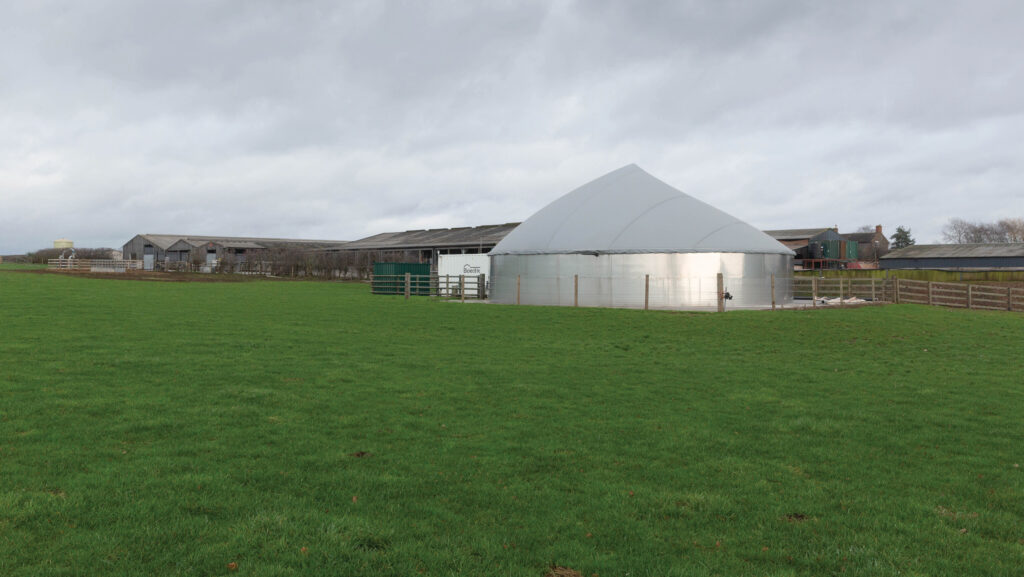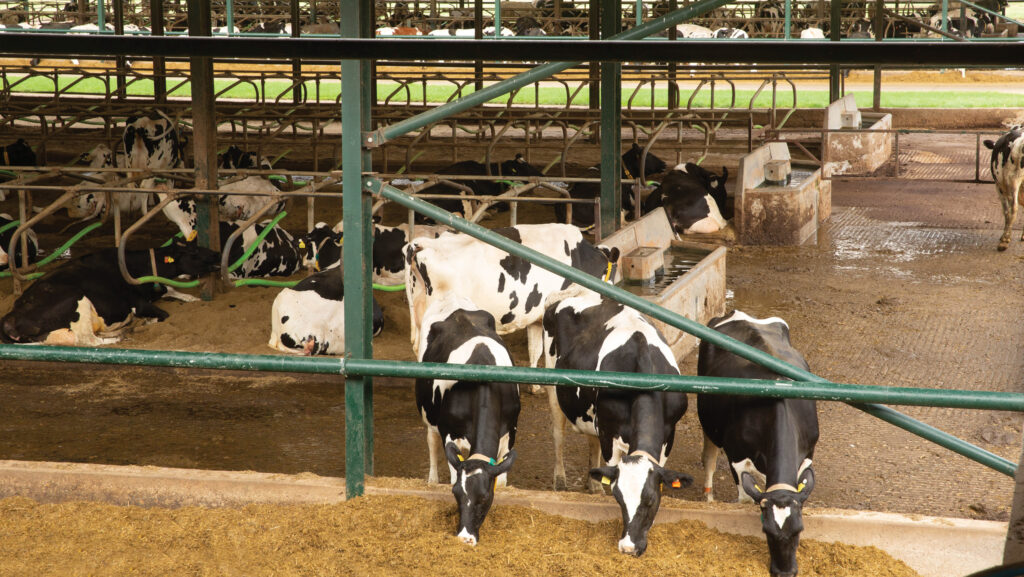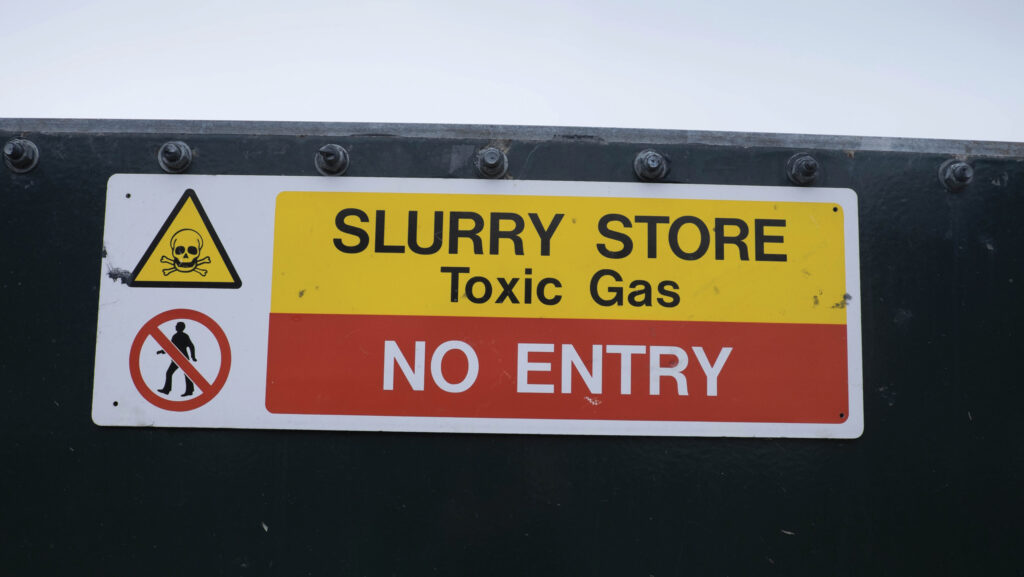On-farm slurry-fed anaerobic digestion: What to consider
 Anaerobic digestion plant on a dairy farm © Tim Scrivener
Anaerobic digestion plant on a dairy farm © Tim Scrivener Interest is growing in farm-scale anaerobic digesters, using slurry as a feedstock, driven by the need to reduce manufactured inputs – for economic and environmental reasons – and the cost of energy.
A secure source of feedstock is essential for an anaerobic digestion (AD) plant to operate.
As a dairy farm produces thousands of tonnes of slurry a year, a consistent supply is guaranteed for a facility that can run solely on that material.
Yet, according to the AHDB, of the estimated 100m tonnes of slurry produced by UK farms every year, only around 3m tonnes are processed in AD plants.
See also: How a slurry digester is helping cut energy costs by 85%
Costs and feedstock supplies
A dairy cow produces about 23t of slurry a year, so working out a farm’s feedstock volumes should be relatively simple.
This will determine whether the plant can operate solely on slurry or will need to be supplemented – for example, with home-grown energy crops.
As slurry is considered waste, the site will need an exemption or permit to operate.
Anna Becvar, director at Earthcare Technical, who supports farmers with aspects of the AD planning and environmental permitting process, says other considerations will then follow.
If additional feedstocks are needed, the cost of producing and processing these will need to be calculated, she explains.
“Are you going to use all the energy and heat generated on the farm?
“Or is the ambition to export some of it and upload electricity to the grid, or inject biomethane into the grid?” she adds.
As well as the system itself, other cost considerations include planning, annual compliance charges if the site is permitted, and grid connection if there is excess energy to export.

© Tim Scrivener
Potential emission levels
Processing slurry and manure in an AD plant will produce biogas – a mixture of methane, carbon dioxide and other gases.
Biogas can be used, as it is within a combined heat and power (CHP) plant or boiler, to generate heat and energy.
Alternatively, biomethane can be produced (by separating the carbon dioxide) and used to fuel a tractor or other engine, or injected into the grid.
Use of captured gases
Most dairy farms use all the energy produced by slurry-only AD plants, but larger units have the potential to sell some, says Anna.
“Grid access used to be a limiting factor, but now we have gas upgrade and virtual pipelines, which allows for the transport of the gas that is being produced and injection at a grid injection point,” she explains.
Tractors and engines that can run on biomethane are also more widely available, providing another market for that gas.
Planning consent
The type of planning consent required will depend on the size and scale of the AD plant and its purpose.
Full planning consent will almost always be needed, although some may fall within permitted development rights.
Anna recommends seeking pre-application advice to establish which type applies.
There is often opposition to these facilities, but the concerns about traffic movements and odours are more typically directed at larger sites.
In the case of traffic, for example, if the AD plant runs on slurry only, all the resources will be generated on the farm, so there should be no additional vehicle movements.
Environmental permits
If slurry and manures are being processed, the AD plant will fall under environmental permitting regulations.
Size will dictate which of these regulations will apply, says Anna.
In addition, different rules, charges and exemptions apply in England, Scotland and Wales.
A current challenge is that the environmental permitting regime is not ideally suited to small, on-farm AD.
“Companies are innovating technology for on-farm AD.
“And because some of these don’t fall within the exemption, they are immediately categorised as bespoke, and bespoke permits are very expensive,” she explains.
“To qualify for an exemption, waste should be kept in the digester for at least 28 days, but some of the new technologies can process much more quickly.
“This is good, but the permitting system isn’t keeping pace with innovation.”
To secure a permit, the potential impact of the AD plant on people and the local environment needs to be considered, as well as proximity to watercourses and whether the site is in a groundwater source protection zone or air quality management area.
Environmental permitting charges in England |
||
|
Item |
Application |
Annual subsistence charge |
|
T24 Exemption – anaerobic digestion at premises used for agriculture and burning of resulting biogas |
Full charge £420 |
£0 |
|
Standard Rules SR2021 No.9 on-farm anaerobic digestion facility, including use of the resultant biogas – waste recovery operation |
£2,641 |
£3,809 |
|
Bespoke on-farm waste operation using less than 100t of waste, or a combination of waste and non-waste, each day |
£10,141 |
£7,736 |
Environmental permitting charges in Wales
- T24 Exemption: SR2023 No.1 on-farm anaerobic digestion facility using farm wastes only, including use of the resultant biogas
- New application: £1,914
- Annual compliance monitoring: £1,843
Bespoke
- New application: £10,312 plus a £125/hour charge for time and materials if the permit application takes more than 150% of the standard time for Natural Resources Wales to determine.
- Annual compliance monitoring: Calculated according to individual application and will depend on the complexity of the site. All compliance monitoring charges are based on operator performance and a score generated, with poor performers paying more.
Environmental permitting charges in Scotland |
|||
|
Activity |
Authorisation level |
Application fee |
Annual fee |
|
Anaerobic digestion of less than, or equal to, 1t of waste including animal by-product food waste at any one time in an enclosed system |
Low-risk waste position LRWA 18 |
£0 |
£0 |
|
Anaerobic digestion of biowaste up to 100t/day |
Registration |
£677 |
£874 |
|
Anaerobic digestion greater than 100t/day |
Permit |
£14,573 |
£6,535 |
|
This new scale of fees will apply in Scotland from 1 November 2025, when AD will be regulated under The Environmental Authorisations (Scotland) Regulations 2018. |
|||
Selecting the best site
Siting the plant where the potential impact on people and the environment can be minimised will give it the best chance of success.
As well as the ammonia and nitrogen in slurry, where there is a boiler or CHP engine, as is the case with an AD plant, there will be a combustion product impact and that also needs to be considered.
“If you want the facility to be granted under a cheaper, standard rules permit, all the criteria of that permit will need to be met – but it might be impossible to do that.
“Therefore, you need to consider which element of these requirements you allow to drive what you are doing,” says Anna.
“If very small, it could be sited next to the slurry store, but does that put it right next to the farmhouse?
“Try to find the best location while taking all the variables into account.”

© Tim Scrivener
Potential stumbling blocks
Anna believes there is more interest than ever in farm-scale AD plants, but the biggest hurdles are the planning system and flexibility in permitting.
“This is where the bottlenecks are, but there is definitely a lot of interest,” she says.
“There are still quite a few AD plants going in, but there could be more clarity around what is required for these small-scale facilities, to encourage uptake,” Anna believes.
Defra recently launched a consultation, which includes questions around this.
